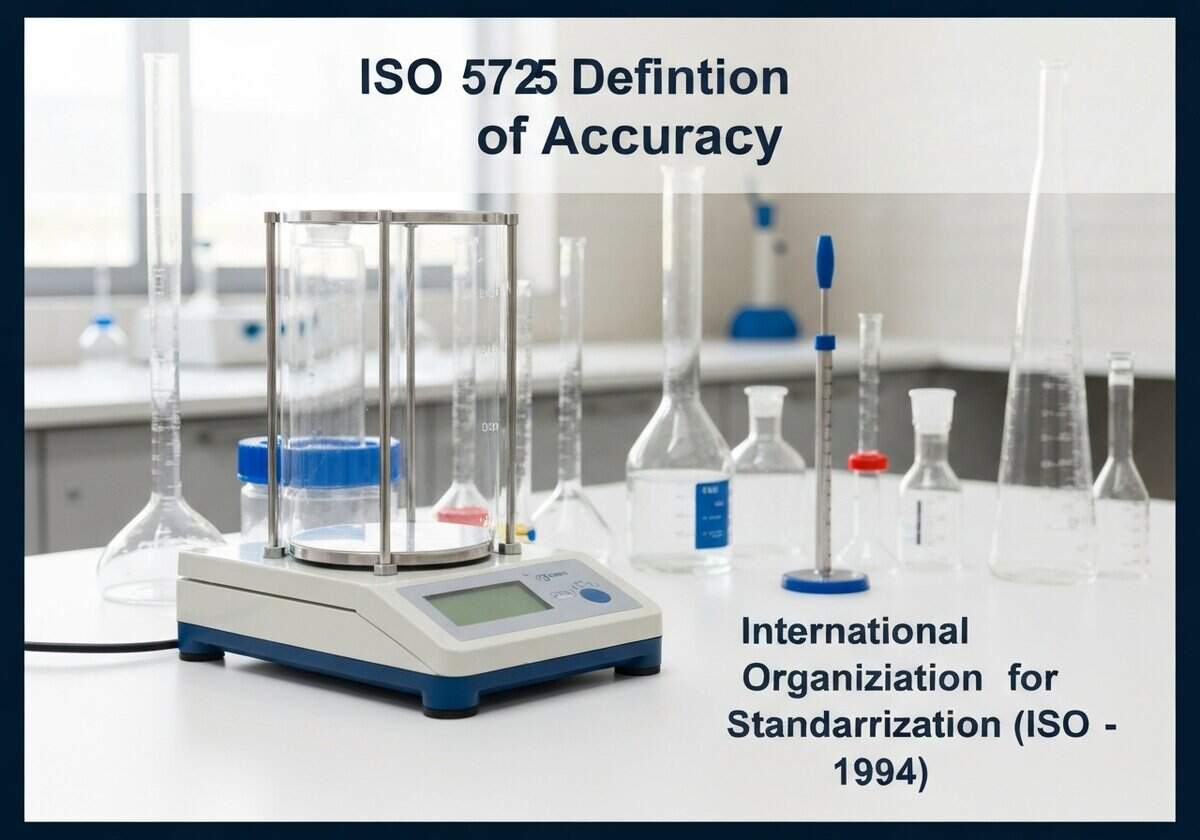ISO 5725 标准将准确度定义为真实度和精确度的结合。真实度是指大量测量结果的平均值与公认参考值的接近程度,量化系统误差或偏差。精确度是一组结果之间的接近程度,量化随机误差。因此,准确度既需要高真实度,也需要高精确度。


(generate image for illustration only)
ISO 5725 标准将准确度定义为真实度和精确度的结合。真实度是指大量测量结果的平均值与公认参考值的接近程度,量化系统误差或偏差。精确度是一组结果之间的接近程度,量化随机误差。因此,准确度既需要高真实度,也需要高精确度。
The International Organization for Standardization (ISO) standard 5725, “Accuracy (trueness and precision) of measurement methods and results,” provides a formal framework to avoid the ambiguity of the common term ‘accuracy’. By decomposing accuracy into two distinct components, it allows for a more rigorous analysis of measurement error. ‘Trueness’ is a qualitative concept that is expressed quantitatively as ‘bias’. It measures how far the mean of a large set of measurements deviates from the true or accepted reference value. A measurement method with high trueness has low systematic error.
‘Precision’ under ISO 5725 is further subdivided into ‘repeatability’ and ‘reproducibility’. Repeatability refers to the variation in measurements taken by a single person or instrument on the same item and under the same conditions (short-term variation). Reproducibility describes the variation arising when using the same measurement process among different instruments, operators, or laboratories (long-term variation). A measurement method is precise if it has small random errors, leading to low variability under both repeatability and reproducibility conditions. Therefore, according to ISO 5725, a measurement is ‘accurate’ only if it is both true (low bias) and precise (low random variation).
迎接新挑战
机械工程师、项目、工艺工程师或研发经理
可在短时间内接受新的挑战。
通过 LinkedIn 联系我
塑料金属电子集成、成本设计、GMP、人体工程学、中高容量设备和耗材、精益制造、受监管行业、CE 和 FDA、CAD、Solidworks、精益西格玛黑带、医疗 ISO 13485
ISO 5725 精确度定义
(如果日期不详或不相关,例如 "流体力学",则对其显著出现的时间作了四舍五入的估计)。
相关发明、创新和技术原理
{{标题}}
{%,如果摘录 %}{{ 摘录 | truncatewords:55 }}
{% endif %}